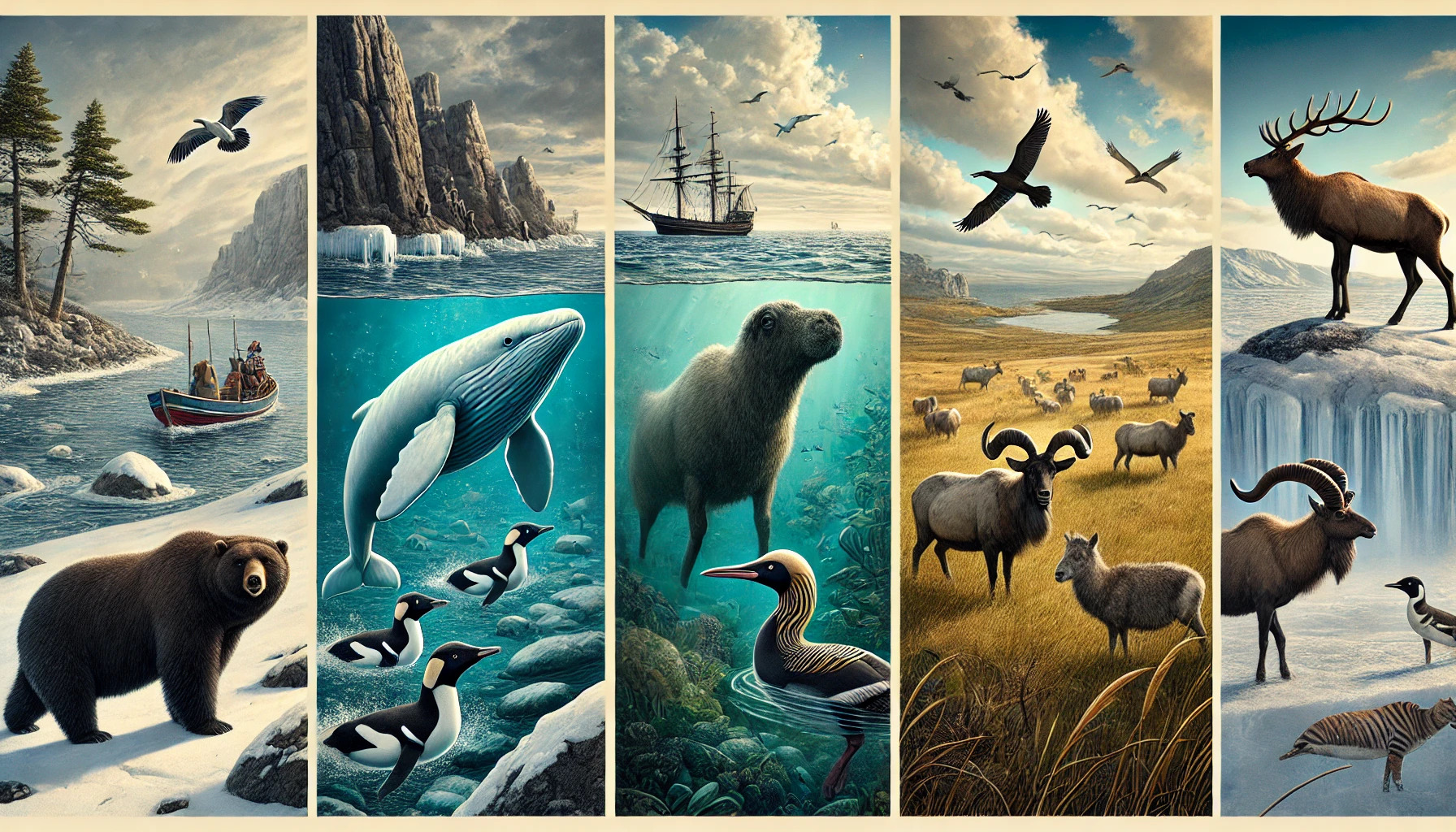Many animals have vanished from the Earth, becoming the last of their lineage before humans changed their world. These extinct creatures often faced enormous challenges, including habitat loss and hunting, largely driven by human activities. The stories of these animals shed light on the impact humans have had on biodiversity.
Some of these unique species, like the thylacine, once roamed the Earth but could not survive the pressures brought about by human action. Others, such as certain types of tree snails, became victims of invasive species and habitat destruction. Understanding their fate emphasizes the importance of protecting the species that still exist today.
As readers explore this topic, they will uncover not just the animals that are gone, but also the lessons learned from their extinction. Discovering these stories can inspire appreciation and action towards current endangered species.
The Impact of Human Activity on Species Extinction
Human actions have significantly affected species extinction throughout history. The ways humans have interacted with the environment have led to the decline and disappearance of many animal species. Understanding this impact is crucial to preserve what remains.
Prehistoric Extinctions
Long before documented history, human ancestors began affecting their environment. Early humans hunted large animals like mammoths and saber-toothed cats. These actions contributed to prehistoric extinctions, altering entire ecosystems.
Evidence suggests that as humans migrated, they brought about changes that disrupted natural habitats. This hunting pressure, combined with environmental changes, resulted in the loss of many species. The disappearance of these animals illustrates the long-standing influence humans have had on the planet.
Recent Anthropogenic Causes
In modern times, human activities continue to accelerate species extinction. Habitat loss is the most significant factor, with urbanization and agriculture leading to the destruction of natural environments. About 75% of the Earth’s land has been altered due to human actions.
Pollution, climate change, and invasive species also play critical roles in pushing animals towards extinction. Reports indicate that since 1970, 60% of animal populations have declined, largely because of human intervention. These modern threats highlight the urgent need for awareness and action to protect vulnerable species.
Conservation Efforts
Efforts to combat species extinction have gained momentum globally. Organizations and governments are working to protect habitats and create reserves for endangered species. These conservation strategies aim to restore balance to ecosystems.
Education and community involvement are essential parts of these initiatives. By raising awareness of the impact of human activity, more people can participate in protecting wildlife. Successful conservation programs demonstrate that collaborative efforts can lead to positive change.
Notable Extinct Species
Several species have become notable for their extinction due to various factors, often involving human intervention. Each of these species tells a unique story about the delicate balance of ecosystems and the impact of human activity on wildlife.
Dinosaurs and the Cretaceous-Paleogene Extinction Event
The extinction of the dinosaurs marked a significant turning point in Earth’s history. Approximately 66 million years ago, an asteroid strike is believed to have triggered the Cretaceous-Paleogene extinction event. This catastrophe led to the extinction of nearly 75% of all species, including the dinosaurs.
Among the famous dinosaurs, the Tyrannosaurus rex and Triceratops stood out for their size and dominance in their environments. Fascinatingly, birds are considered the only living descendants of certain dinosaur lineages, showing how interconnected life can be.
The Dodo and Its Disappearance
The dodo was a flightless bird that lived on the island of Mauritius. It became extinct in the late 17th century due to overhunting by humans and the introduction of invasive species.
Before its extinction, the dodo was a symbol of the fragility of island ecosystems. Studies suggest that the last known sighting of the dodo was in 1662, after which it vanished forever. The dodo serves as a reminder of the consequences of human activity on vulnerable species.
Tasmanian Tiger: The Last Thylacine
The Tasmanian tiger, or thylacine, was a carnivorous marsupial once found in Tasmania, Australia, and New Guinea. Its population dwindled due to hunting, habitat loss, and diseases introduced by dogs.
The last known thylacine died in captivity in 1936, marking a tragic end for this unique animal. The thylacine resembled a dog but had distinctive stripes on its back. Today, it is a symbol of the importance of conservation efforts to protect endangered species from extinction.
The Role of Climate Change in Extinctions
Climate change has played a significant role in the extinction of various species throughout history. Both natural climate fluctuations and modern human-driven changes have greatly influenced animal populations and their habitats. These impacts can lead to changes in ecosystems that are critical for the survival of many species.
Natural Climate Fluctuations
Natural climate fluctuations have occurred for millions of years. These changes often affect temperature, weather patterns, and sea levels. Animals and plants have adapted to these shifts over time.
During the late Pleistocene, Earth experienced drastic climate shifts that led to many extinctions. Cold periods, or glacial epochs, reduced animal habitats. As temperatures warmed, species that could not adapt or migrate faced increased risk.
Some large mammals, like the woolly mammoth, were particularly vulnerable. They struggled to survive as their habitats changed. Natural climate events can disrupt food sources, breeding grounds, and migration patterns, making it hard for species to survive.
Modern Climate Change Impacts
Modern climate change, primarily driven by human activities, poses a new threat to many species. Rising temperatures and shifting weather patterns continue to alter habitats. As a result, some species are experiencing direct consequences, including habitat loss and reduced food availability.
Research indicates that around 160,000 species could face extinction due to these changes. Many plants and animals struggle to adapt to the speed of modern climate change. For example, certain amphibians are particularly sensitive to temperature changes and are seeing population declines.
Additionally, ocean acidification impacts marine life, reducing food sources for many ocean-dwelling creatures. Human-driven climate change raises urgent challenges for biodiversity, with many species at risk of disappearing if action is not taken.

